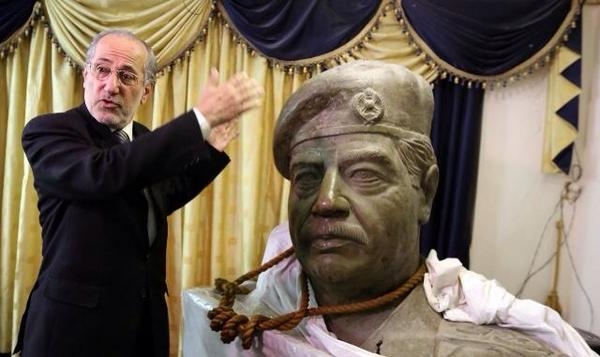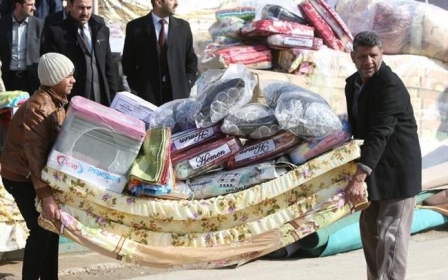Rope used to hang Saddam Hussein could fetch over $7m after bidding war

The rope used to execute former Iraqi dictator Saddam Hussein has been put up for sale by a former politician, and is reportedly attracting bids of up $7 million.
Mowaffak al-Rubaie, a member of Iraq’s governing council after the 2003 US invasion, was present at Hussein’s execution in 2006, and has now put the item up for sale.
A senior Iraqi politician who spoke to Arabic news site al-Araby al-Jadeed said Rubaie received numerous demands to buy the rope after he published pictures of the item slung around the neck of a huge bronze bust of Hussein, who was toppled from his 24-year rule in 2003.
The statue, formerly found in Hussein’s Rihab Palace, is now kept in the reception room of Rubaie’s Baghdad home.
The former security advisor has reportedly circulated pictures of himself posing in front of the statue with a number of prominent Iraqi politicians, who were opposition figures during Hussein’s reign.
Prospective buyers of the rope, according to the source, include a wealthy Israeli family, an Iranian religious organisation and a pair of Kuwaiti businessmen.
The bidding currently stands at around $7 million, but Rubaie is reportedly asking for more.
The prospect of the item’s sale has provoked anger among some activists in Iraq, who say that any profits from the bidding should be returned to the public finances.
Ahmed Saeed, an Iraqi activist, told al-Araby al-Jadeed that Rubaie had “appropriated” the rope after the much-criticised execution, and that any profits were “not his [to keep]”.
Hussein’s execution provoked widespread concern – the trapdoor on which he was standing was released while he was saying his final prayers, and there were reports that a crowd of men insulted the former leader as he went to the gallows.
Footage of the execution, captured on a mobile phone, was later made public – Rubaie later said the leak was “extremely damaging on all fronts”.
Middle East Eye propose une couverture et une analyse indépendantes et incomparables du Moyen-Orient, de l’Afrique du Nord et d’autres régions du monde. Pour en savoir plus sur la reprise de ce contenu et les frais qui s’appliquent, veuillez remplir ce formulaire [en anglais]. Pour en savoir plus sur MEE, cliquez ici [en anglais].




